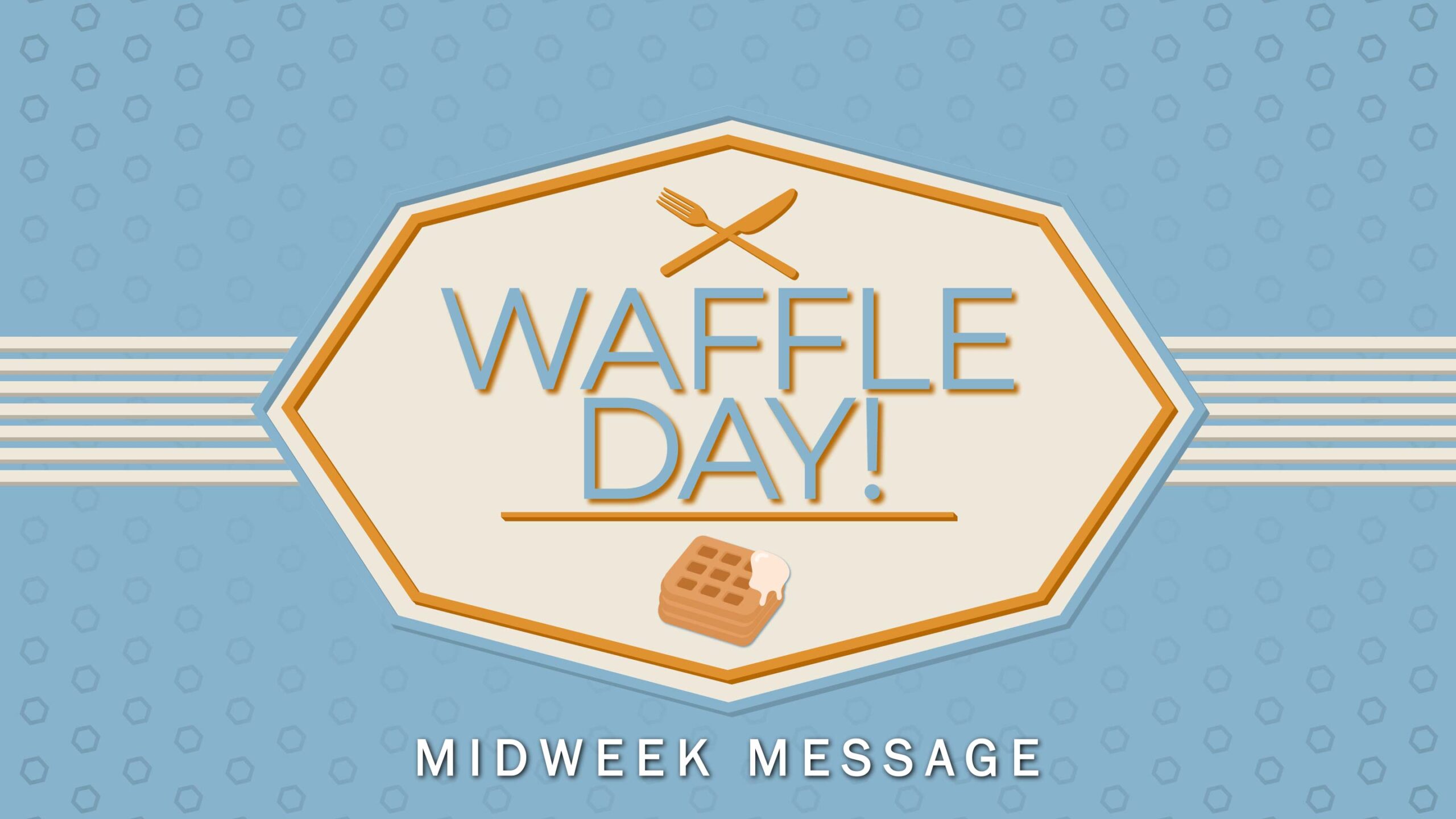August 24, 2023
Dear Hyde Park Family,
Well, here’s an opening to a Midweek Message that I never thought I’d write:
“Happy National Waffle Day!”
I normally overlook these kinds of special recognitions, likely manufactured by restaurant and food industries to promote their products. But for some reason, my email inbox this week was inundated with local breakfast eateries advertising today’s special day. (It may have something to do with the fact that I generally go out for breakfast on Wednesday mornings as part of my weekly sermon-writing routine.)
For what it’s worth, today is sandwiched (pun intended) between yesterday’s “National Cuban Sandwich Day” and tomorrow’s “National Banana Split Day.” Its historical roots are connected to an inventor named Cornelius Swartwout (Great name!), who received a patent for his new invention – the waffle iron – on August 24, 1869. For 154 years, Mr. Swartwout’s invention has graced countless kitchen counters, ubiquitous Waffle House franchises, and hotel breakfast stations.
So, what’s the religious connection? Well, I’m glad you asked!
There’s two. The first one is comical. National Waffle Day is apparently celebrated in different countries on different dates, including Sweden, who observes it on March 25. Why? Well, March 25 is the Christian church’s Feast Day of the Annunciation, which in Swedish is pronounced “Varfrudagen.” (Try to say it; it’s fun.) Over time, many fast-talking Swedes began mispronouncing it as “Vaffeldagen,” which means – yep – “Waffle Day.”
So, in Sweden, the holy day of observing the grand visitation of Mary by the Angel Gabriel was transmuted into a day of honoring the crisp, crevassed doughiness of Cornelius Swartwout’s invention. (By the way, neither of these words should be confused with “Vaffeljern,” which is how you say “Waffle Iron” in IKEA.)
Anyway, here’s the other religious connection. In Medieval Europe, churches began tinkering with the wafers used to celebrate the sacrament of holy communion. (You can see where this is heading. Wafer and Waffle have the same root word, Weben, which means, “to weave.”) Over time, they modified the irons they used to press the wafers into flat discs, inscribing into the metal images of crosses, biblical scenes, and other religious symbols.
These “religious waffles” were often enjoyed at the end of meals, not only as a final treat, but also as a kind of prayerful reminder of the divine source of the meal itself.
Regardless of whether or not you enjoy waffles, and even if you don’t observe National Waffle Day, I hope each of us can take a moment to give thanks to God, who gives us both the food on our plates and the capacity to delight in it. And just as we often say a prayer of thanks before we eat, it may not be a bad idea to take a page from Medieval waffle practice, and also give thanks to God after the meal is over.
Come to think of it, “Medieval waffle practice” is also not a phrase I thought I’d ever use to conclude a Midweek Message.
I think I’ll go celebrate with a waffle.
Grace and Peace,

Senior Pastor, Hyde Park United Methodist

